Empty dropdown
Notes:Founders and VC respondents only.
Investment is down and layoffs are up, as the entire ecosystem adjusts to a new reality. But record levels of dry powder are ready to be deployed.
European tech continues to define the kind of industry it wants to be, and its role in wider society. Companies are focusing on social impact and European self-reliance, and investment in purpose-driven tech has continued to grow despite the downturn.
Maturing ecosystems and policy buy-in create the foundations for future growth. There is still a great deal of unrealised potential and therefore a generational opportunity within the ecosystem.
We hand the platform to Ukraine’s tech sector, to tell their story of 2022, and explore the role of tech during a crisis.
2022 saw European tech shift from record-breaking investment levels to a historic downturn. This chapter explores the top-level data that defined the year.
This is the second-largest amount of capital ever invested into the European tech ecosystem, indicating how much European tech has matured over the last decade.
At the end of 2021, European venture and growth investors sat on dry powder totalling $84B - the highest amount ever on record, and a signal that liquidity remains within the market.
Insiders within European tech are able to differentiate between the short-to-mid-term impacts of a financial downturn and the longer-term prospects of the industry.
In last year's survey, respondents were asked to highlight the main macro risks that could lead to a slowdown in European VC activity over the next five years. Many of the macro risks that ranked highest amongst respondents - interest rates, inflation, geopolitics, and public market sentiment - have all become defining hallmarks of this year. As a consequence, 2022 has been a very different year for the European tech ecosystem.
A sell-off in public markets, starting in late 2021, was the first effect of the compounding set of factors that changed the macro environment. As these macro factors compounded and drove further sentiment change and capital reallocation, the sell-off has continued and does not, yet, show clear signs of having bottomed out. This sell-off has seen the median enterprise software multiple of enterprise value to forward revenue decline from a peak of 10.9x to just 5.8x. High growth software companies are valued on the basis of their forward-looking cashflow generation and investors are currently placing a higher discount on the future value of upcoming cashflows.
The shift away from the market’s long standing appetite for growth-at-all-costs towards a focus on growth efficiency is reflected in what is now correlating with premium multiples in the public markets. The market is prepared to reward companies that are growing quickly and generating strong cashflows, as seen here by the multiple premium, at 8.8x, enjoyed by companies in the top quartile for revenue efficiency (defined in this case as unlevered free cash flow margin to revenue growth). At the point of publication, multiples on both a median and top quartile basis are trading below their 10-year historical average.
2021 was a remarkable year for the European tech ecosystem with total investment eclipsing a landmark $100B for the first time. 2022, unsurprisingly, is on track to fall short of 2021's record-breaking levels, but only by a relatively small margin.
Given the material slowdown experienced over the summer, a conservative estimate would be just around $85B for the full year, as it accounts for actuals up to end of October and annualised on the basis of average investment amounts between the three months of August, September, and October.
It ought to be said: this is the largest amount ever invested in the European tech ecosystem, apart from last year. It does represent a year-on-year decline of 18% - but in the face of the toughest macroeconomic environment since the Global Financial Crisis, such a minimal decrease is a noteworthy outcome.
For further context, this represents a greater than twofold increase in total capital invested compared to 2020, and more than 8x the level recorded when the first edition State of European Tech report was published back in 2015.
projected for Europe in 2022.
The tale of 2022 has been one of two halves. The record-breaking level of investment activity that defined 2021 carried over into 2022. In fact, by the end of the first quarter of 2022, investment levels were tracking a staggering 52% up from 2021. Even at the end of the first half of the year in June, total capital invested still stood around 4% higher than at the same point last year.
July, however, marked the month when the investment frenzy of the past 18 months started to cool off. This slowdown really took effect through August and September and has seen monthly investment levels drop closer to levels last seen in 2018, at around $3-5B invested per month. As a consequence, total investment in Q3 2022 ended up down more than 40% compared to the same quarter in 2021.
The increased velocity of investment in 2021 is particularly evident when looking at the 12 month trailing amount of funding going to European companies. After a slight dip in Q2 and Q3 of 2020, the levels of investment accelerated throughout 2021, peaking in Q1 2022. Since then, the cool off has become evident with the latest quarters coming in below the investment levels seen in the year before.
While capital market conditions have changed significantly during the second half of 2022, the ecosystem still benefits from access to large pools of investable capital that have not yet been deployed, known in industry terms as 'dry powder'.
At the end of 2021, the latest period for which comprehensive and reliable data is available, European venture and growth investors sat on dry powder totalling $84B. This is the highest ever amount of dry powder on record and represents a 2.3x increase on the level of 2017.
Since then, 2022 brought both strong fundraising activity and overall slower deployment - so in all likelihood, this number remains similar or potentially has even net increased.
It is reassuring that there will still be some level of capital liquidity within the market, even if conditions become tighter in 2023 than they have been during the second half of 2022. The pace at which that capital is deployed, however, is something to watch out for as investors recalibrate their plans to a new market reality.
The unprecedented volume of capital supply that fuelled record-breaking levels of investment in 2021 and the first half of 2022 was partly a function of investors accelerating their pace of deployment. For some investors, it became a race to invest faster and at greater scale.
As a result, the median time between fundraises for European VCs compressed from a long-run trailing average of 3.5 years to 2.4 years in 2022. The compression of fundraising cycles has been even more extreme in the US, where the median time between funds reached as low as 1.5 years in 2022, compared to an already much shorter long-run trailing average of 2.4 years.
Put simply, if the median fundraising cycle compresses from three years to two years, it has the effect of roughly increasing the amount of capital invested by around 50% per year. Looking ahead to 2023, it's likely we will see this trend reverse as investors put the brakes on their pace of investment, no doubt accompanied by a sigh of relief from their LPs. If this plays out, it will have a major impact on expected capital supply in the market.
The slowdown in investment activity started to become evident in later-stage investment rounds around a full quarter before any notable shift was observed in investment levels at earlier-stage rounds. While total capital invested in rounds sized at $20M or more was up 62% in Q1 2022 compared to Q1 2021, the shift in the market that took effect in Q2 saw total investment that quarter decline by 26% versus the comparative quarter in 2021.
In the third quarter of 2022, the comparison is even tougher, with total investment down 48% compared to Q3 2021. The biggest decline, unsurprisingly, came in the level of investment into so-called mega rounds of $250M or more, down 46% year-on-year at the end of September.
After a lag, the slowdown in later-stage investment activity started to trickle down into earlier stages. This shows up most prominently in the numbers from Q3 2022 onwards.
During the first half of 2022, the total capital invested in rounds of $20M or less was up 4% on the same period last year, but a contraction in early-stage activity has led to a third quarter total that is down 5% versus the equivalent period of 2021.
Despite this slowdown, more than $4.3B was invested in rounds sized at less than $20M in Q3 2022, meaning it still represents the second-largest ever Q3 on record for these stages.
Looking at the number of disclosed funding rounds by round size helps to clarify how investment activity evolved in 2022. Most obviously, there is a slowdown in the count of rounds at the smallest and largest ends of the spectrum.
Rounds sized below $5M are projected to end up nearly 30% lower versus 2021, though that gap will likely narrow as the reporting lag is closed (see methodology note on why the most recent seed investment data is systematically understated). On the other end of the spectrum, the count of rounds sized at $250M or greater is expected to decrease by 33% versus 2021. That said, even with this contraction, the number of outsized $250M+ rounds in 2022 as a whole is still likely to end up at 10x the volume of just five years ago.
In the first half of 2022, there were a total of 133 rounds of $100M or more. Remarkably, this exceeded the total for the whole of 2019 and 2020 combined, while also exceeding the volume of such rounds seen in either H1 or H2 of last year.
H2 2022 is on track to fall far short of these numbers if Q4 continues in line with Q3's investment levels - with only 37 rounds of this magnitude so far.
The reality of the new market environment is reflected in sentiment amongst founders that responded to this year's survey. Unsurprisingly, sentiment has flipped dramatically over the course of 2022, with 82% of founder respondents to the survey believing it is now harder to raise venture capital than it was 12 months ago. This is, by some margin, the biggest change in founder sentiment on the fundraising environment that we have recorded over the past five years of surveying the ecosystem.
Founder perception of a more challenging fundraising environment is also mirrored in the observations of VC respondents to the survey.
We asked VCs to share their experience of how the change in the market environment has impacted fundraising dynamics for their portfolio companies. The most frequent response, given by 74% of VC respondents, is an observed lengthening of fundraising processes for their portfolio companies. This was followed by an increased frequency of bridge and/or extension rounds (cited by 63% of respondents), and slower decision making by investors (60% of respondents).
Many VCs also highlighted delays to exit processes, more extensive and deeper due diligence by investors, and increased structure in term sheets as other effects of the changing market environment.
Bridge rounds are typically more prevalent at the earliest stages of a startup's fundraising journey, when bridge rounds are commonly used to buy more time to find product-market fit. Data from the most recent available quarter, however, highlights that later-stage founders are now raising bridge rounds at the same proportionate rate as those at earlier stages.
This demonstrates one way that founders have responded to the current and anticipated changes to the fundraising environment - by opportunistically raising additional capital as extensions to existing rounds to strengthen their balance sheets and extend their runways.
These extensions to existing rounds, typically at flat valuations, come at the cost of increased dilution for the existing shareholder base, but take advantage of investor demand (often led by insiders) to reinforce balance sheets at a time when cash and runway optionality are critical.
The heated market conditions that characterised 2021 saw a record number of new unicorns emerge from Europe, with 105 companies achieving the billion-dollar milestone for the first time last year. This represented a level of new unicorn creation 2.5x greater than any prior record year for the European tech ecosystem.
Unsurprisingly, this year looks very different to last, with 'only' 31 new unicorns birthed in Europe during 2022 (at the time of our publication deadline). This marks a steep decline from last year, but actually just reverts the rate of new unicorn creation back to levels typically seen in recent years. 2021 now clearly stands apart as an outlier year.
A major factor in the slowdown of late-stage and large-round investment activity has been the decrease, and in some cases the complete withdrawal, in activity by so-called 'crossover investors'. These are funds that actively invest across both the public and private markets.
During 2021, these funds were involved in nearly a third of all funding rounds of greater than $100M, and were therefore a huge driver of the increased pace and scale of investment last year.
Following the steep sell-off in the public markets, however, crossover funds have pulled back significantly from larger, later-stage rounds in the private markets. The slowdown in their involvement in $100M+ rounds started in Q2 2022 and has tapered more aggressively as the year has gone on.
Interestingly, crossover funds started to shift to an increased level of involvement in smaller, earlier-stage rounds during 2022. By the first half of 2022, these were up 13% in volume versus the same period in 2021 and up 2.2x versus H1 2020. This trend appears to have reversed again from Q3 2022 with the number of <$100M rounds involving crossover investors down 64% versus Q3 2021.

This is a cyclical trend and tends to accelerate in the late stages of a bull market, seen in the late '90s before the internet bubble burst, in 2006 before the Global Financial Crisis, and in 2014-15 before the mini SaaS blip. Whilst I don’t expect that we will see a return to these sorts of rounds for a couple of years, as the cycle turns back upward, it will be back (for better or worse).
Despite the withdrawal of some more fickle investors and the likelihood that others may also pull back their investment activity, the European tech ecosystem still benefits from a diverse set of experienced, long-term oriented, and active investors. So far during 2022, more than 3,200 unique institutions have participated in at least one investment in Europe, a number which has grown at a significant volume over recent years.

I believe that the companies and technologies that solve consumer demands in a sustainable way will have a clear advantage. Being able to quickly adjust to the ever changing macro conditions that we are all subject to, is a key enabler for European tech to emerge stronger.
At the early stages, European startups are typically funded by European investors. While the relative share has decreased slightly over the past 5 years, domestic and European investors still account for around 80% of all capital invested into European tech companies in rounds of less than $20M.
At later stages, however, the presence and scale of international investment is important, and year-on-year this share has come down, with European investors accounting for only 51% of investments in rounds above $20M.
The explosion of capital invested into later-stage rounds in Europe over the past two years has, unsurprisingly, led to a rapid rise in the number of unique investors that are actively investing in the region in larger rounds of $100M or more.
These new investors are primarily of European and US origin and have increased more than 5x in the past five years. Interestingly, while 2022 has seen the number of European investors in rounds of $100M+ grow slightly, there is a notable decline (-22%) in the number of active US investors in these rounds since 2021.
Last year, 93% of VC respondents perceived that the landscape had become more competitive during 2021. This is not surprising given the increase in new investors, the pace of investment, and a heightened fear of missing out from many investors. As the market has turned, however, so has the perception of competitive dynamics.
This year, the greatest share of VC survey respondents (48%) perceive that the market has become less competitive over the past 12 months. However, that still means 53% of VC respondents perceive competition to be unchanged or even more competitive. This is perhaps a reflection of the fact that, while the market may have seen competitive intensity between VCs wane more broadly, the strongest founders building the most exciting companies still generate huge competition between investors.
The total exit value stands at close to $75B in 2022, a 35% decrease versus 2021. It includes $33B from announced M&A exit value, $8B via IPOs and direct listings and $33B via SPACs. The SPAC value is primarily driven by Polestar de-SPAC in the summer which represents 80%+ of the total value exit value of SPACs. Overall $46B (61%) can be attributed to VC-backed companies.
IPOs have been one of the biggest casualties of highly uncertain and volatile public markets and negative public market sentiment. The data is stark. There have only been three tech IPOs with a market cap in excess of $1B in Europe and the US this year. This compares to 86 during the bumper year for IPOs of 2021, representing a 30x reduction in volume.
This, of course, has significant knock-on effects for the overall ecosystem in terms of capital liquidity, both from the perspective of the ability to tap the public markets for capital, as well as in terms of the ability for existing shareholders to crystallise value by exiting holdings and distributing or reinvesting any capital gains elsewhere. It remains to be seen when capital market conditions may turn more favourable and enable a partial or full opening of the IPO window.
The impact of the change in market conditions is clearly reflected in fund performance, as measured by the Cambridge Associates index for European VC. While longer-term performance across three-, five-, or ten-year horizons remains strong and is materially outperforming other benchmarks, the short term contrasts significantly: one-year performance has eroded significantly to just 0.9%.
This time last year, by comparison, one-year performance of the European VC index stood at 90.9%, driven by 2021's remarkable gains. Despite these changes in performance, the European VC index is still outperforming comparative benchmarks for European Private Equity across all horizons from 1-15 years and the MSCI Europe Index, a measure of public equities performance, across all time horizons in the dataset. Ultimately, what matters in venture, however, is the long-term performance horizon, not the mark from one year to the next.
The reopening of the public markets will likely require greater confidence and certainty around the macro environment. But survey respondents do not expect critical macro factors to evolve positively over the next 12 months.
In fact, the majority of survey respondents expect to see a worsening of public market sentiment, inflation, geopolitical instability, and most other factors. The only brighter spots on the horizon may be an improvement - or at least no further deterioration - in the war for talent and in supply chain challenges. Survey respondents, it seems, are bracing themselves for a challenging 2023 from a macro perspective.
To dive deeper into the question of what lies ahead for the European tech ecosystem in 2023, we asked survey respondents to share, in free text format, their perception of the greatest challenges of the coming 12 months.
We analysed response themes using a language model to group responses by their semantic meaning. For example, responses relating to geopolitical instability may include related words such as “politics”, “governments“, and “wars”. Each group was then labelled with representative words, and further grouped into manually identified high-level areas. For the purpose of this analysis, each response was attributed to one primary theme only, providing a set of mutually exclusive answers.
The top two challenges highlighted by survey respondents were not surprising. The number one concern, especially among founder responses, is accessing venture capital. This was followed by the challenges posed by the macroeconomic environment and geopolitical instability.
In addition to a primary theme, we then attributed additional themes to each response, capturing other areas that were perhaps less prominent but expressed by respondents nonetheless. In this analysis of respondent sentiment, we have taken into consideration these secondary themes. While some answers only mentioned one specific challenge, many responses mentioned multiple challenges. These are therefore not mutually exclusive. For example, while 26% of all respondents cite access to capital as a primary theme, ~40% of all respondents express this concern when taking into account primary and/or secondary themes.
We also looked at how perceptions varied across different respondent types. Interestingly, the stack rank of challenges is exactly the same for all respondent types: the macroeconomic environment ranks top overall, followed by access to venture capital, and then the risk of a lack of innovation.
There are, however, a few notable differences. LPs, for example, are far more likely to have cited access to capital as one of the greatest challenges. We can only speculate, but we presume this reflects an understanding from the top of the capital stack as to how capital liquidity - or rather a lack of - is a defining feature of down cycles.
Unsurprisingly, the challenge of accessing talent, on the other hand, was not on the radar of LPs, but often cited by founders and C-Level executives working in tech companies.
Despite the many challenges ahead, the resilience of the European tech ecosystem and its ability to 'weather the storm' is reflected in a strong continued sense of optimism in the future of European technology. 77% of all survey respondents are either more optimistic or retain the same level of optimism as they did 12 months ago.
Surprisingly, only 23% of respondents have seen their optimism lessen compared to last year. This is likely because insiders within the European tech ecosystem are able to differentiate between the short-to-mid-term impacts of a financial downturn and the longer-term prospects of the European tech industry, which is ultimately dependent on the strength of the entrepreneurial ecosystem and the tailwinds of technological innovation.

The current economic conditions are the perfect opportunity to sharpen our focus on customers’ real problems. It’s easy to extend product breadth during bonanza, only to learn later that certain new use cases had limited return. It also gives founders an opportunity to develop their grit and work on their mindset. It’s going to be challenging, that’s a fact.
Tech has become critical to Europe’s economy. Businesses and investors are now focusing on improving Europe’s future, with purpose-driven companies thriving amid a wider downturn.
Tech’s ‘Gross Value Added’ has grown at twice the rate of non-tech sectors, overtaking the finance and insurance industries combined.
ESG is front of mind for investors. LPs and VCs say that it’s a top concern when forming a partnership.
A wealth of European tech companies are working towards at least one of the UN’s Sustainable Development Goals.
At a regional level, the digital economy already contributes more than 6% of Gross Value Added ('GVA'), equivalent to nearly $800B and significantly more than the European finance and insurance industries combined. While Europe as a whole lags behind the US materially on this measure (6.3% versus 8.8%), selected individual countries within the region, such as Sweden & Bulgaria, are already on par with or close to achieving the same level of GVA contribution from the digital economy. Economically, tech is already vital to Europe.

Our future society is in the making. A vibrant and growing community of European entrepreneurs are building businesses, transforming markets and reshaping entire industries. The opportunities are seemingly endless – AI developed and deployed to anticipate and fulfil human needs on a mass scale and to solve intractable problems like climate change, food insecurity, and iniquities in health and social care. Our products and technologies must live up to the standards we want for our future. Ironically, it was Putin who said, ‘the country that leads in artificial intelligence would rule the world’. Chilling as it is, that quote illustrates what is at stake. Now more than ever, European tech has the opportunity to lead with human-centric and trustworthy AI that ensures a future that is safe, kind, generous, and equitable for all.
The technology sector's increasing importance for the overall European economy's growth is underlined by its remarkable gains over the past 10 years. The Gross Value Added ('GVA') of the European tech sectors has increased at around 2x the rate of non-tech sectors, doing so consistently over the past decade, including throughout the toughest periods of the pandemic. GVA is a useful economic productivity metric that measures industry-level contribution to the economy, net of the impact of subsidies and taxes compared to GDP.
Tech is only increasing in importance to Europe's economic growth, as the relative contribution of tech continues to outpace other sectors and accelerate ahead. While the tech sector has outgrown non-tech sectors by a factor of two over the trailing 10-year period, tech's growth advantage versus the rest of the European economy has widened to 3.4x in the past three years.
higher growth rate than total employment over the past 10 years
The sheer scale of the tech opportunity is further emphasised by the magnitude of global tech spend, which has more than doubled over the past 20 years, reaching more than $4.2 trillion in 2021.
Tech has reached this scale by transforming how we live and work as producers and consumers, but now promises to reshape so much more, from energy sovereignty to biodiversity preservation, to defence and cybersecurity, to AI safety, and far beyond.
Tech is a tool which can be used to help or harm, but it holds the potential to be part of the solution addressing the many crises humankind faces. Most would agree that a key priority for the next decade is to achieve a sustainable future for all, as outlined by the UN's 2030 Sustainable Development Goals (SDGs).
Through a collaboration with Dealroom, dating back to 2019, we have been able to quantify the investment from both tech talent and investors aimed at addressing these challenges. Dealroom manually tagged keywords to companies in its platform across all 17 SDGs, and tagged companies with purpose at either the core of or adjacent to their business model. Through this exercise, we can measure the direction of travel for tech as a motor for progress. Full notes on the methodology are available in the report appendix.
Purpose-driven tech is inching back towards the record it reached in 2020, representing close to one-fifth of total capital invested. While purpose-driven companies address any of the United Nations' SDGs, Planet Positive is a subset of SDGs which target sustainable use of the planet's resources. This year, Planet Positive companies gained further market share of the broader tech market, capturing 19% of total European funding so far this year, up from 15% last year. Year to date, this represents $10.3B invested in tech companies with Planet Positive themes.
Climate tech, the smallest subset addressing only SDG 13, Climate Action, stands at $6.9B YTD. While all three categories have exhibited upward trendlines since 2018, both 2020 and 2022 - two years defined by global crises - saw spikes in their share of overall investments.
Climate Action (SDG 13) has received the most funding overall and has accelerated with 4x more funding than 2017-2019's cumulative figure. But other themes are accelerating and, in particular, Life on Land (SDG 15), Responsible Consumption and Production (SDG 12), and Industry Innovation and Infrastructure (SDG 9) have had even higher growth multiples since 2017-2019 levels, 6x, 4.7x, and 4.6x respectively.
Despite this growth, it is telling that SDGs 15 and 14 - Life on Land and Life below Water - remain at far lower overall funding levels compared with the other climate-related SDGs listed.
This likely reflects the continued challenge over funding (and monetising) innovations / deep tech related to biodiversity, oceans, and general natural capital resources requiring more patient capital. But numerous entrepreneurs, investors, and policymakers continue to try to crack this case; hopefully the growth rates we see here - since 2017, 25x and 5x respectively - are harbingers of much more growth and innovation to come in these important areas.

We know that avoiding the worst effects of climate change requires two things: radical emissions reduction, and the permanent removal of gigatons of carbon already in the atmosphere and oceans. European startups like 44.01, Mission Zero and Climeworks are attracting global investors and customers for novel carbon removal techniques: sucking CO2 out of the air, sprinkling CO2-reactive dust on agricultural fields, and turning CO2 into rock. As these companies scale, they’ll become a source of growth and employment across Europe. But we need to be removing gigatons, not grams. Those entrepreneurs need a bold assist to get there. We need more of Europe’s institutions to promote high quality, permanent carbon removal, act as a customer, and help these companies scale. Policymakers can also help steer more public investment towards climate tech, just like some of them did to boost their domestic startup ecosystem. 65% of global climate tech investment went to US climate startups last year. Surely, we could do better.

Focus: CO2 removal
HQ: Finland
Stage: Seed

Focus: Wildfire detection
HQ: Germany
Stage: Series A

Focus: Sustainable forest investment
HQ: Denmark
Stage: Series B
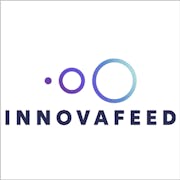
Focus: Insect feedstock & fertiliser
HQ: France
Stage: Growth stage

Focus: Plant-based meat alternatives
HQ: France
Stage: Series A

Focus: Sustainable fertiliser
HQ: Norway
Stage: Late VC

Focus: Chemical-free soil health treatment
HQ: Norway
Stage: Late VC

Focus: Plant-based dairy alternatives
HQ: Sweden
Stage: Series A
of LPs chose to not commit to a GP relationship primarily due to ESG concerns.
of VCs said they have been placing even more emphasis on social and environmental impact since the beginning of 2022.
of VCs reported that sustainability was a regular item on the board agenda.

It has been a difficult year in Europe for many reasons, but I'm encouraged that we haven't lost sight of the most pressing issues facing humanity. Climate change is rightly top of the agenda globally and there are signs that Europe is leading the way through innovation in this area. Matching technical expertise with scientific research to build profitable and purposeful companies has not always been our greatest skill, so it's critical that we build on these solid foundations. This must extend beyond funding for software innovations and consumer applications to deep tech solutions that tackle some of our hardest problems. In my industry, chemical manufacturing, the transition to sustainability is too slow. Petrochemicals - the main ingredient in products such as shampoos, detergents, plastics and paints - are set to account for more than half of the growth in world oil demand by 2050. Industrial-scale collaboration is needed if we truly want to end chemical pollution and deliver a better world for people and the planet.
Over the past five years, investment in purpose-driven tech companies has increased at a huge scale on a global basis, spiking materially in 2021 in all major regions. This growth has seen total cumulative capital invested in Europe into purpose-driven tech companies reach more than $54 billion since the start of 2018.
Interestingly, investment levels on an annualised basis in Europe look set to come very close to matching 2021's record-breaking amounts. By contrast, investment amounts in North America and Asia decreased by around 40% and 45% in 2022 compared to last year, respectively.
On a global basis, Europe now accounts for the largest share (57%) of all investment going into early-stage purpose-driven tech companies, as defined by the share of capital invested in rounds up to $20M. This is very meaningful given Europe's share of overall global investment stands at 23% only.
For the earliest stages (i.e. rounds of less than $5M), Europe's share is even more significant, equating to 70% of all capital invested globally.
At later stages, however, Europe's share of global investment into purpose-driven tech companies is lower: for rounds of $100M+, Europe has a 41% share.
The increased level of investment into purpose-driven tech companies has translated into a growing number of breakout companies emerging from Europe with purpose at their core. There are now 42 European unicorns classified as purpose-driven, a close to threefold increase from 15 just three years ago in 2019. As a result, purpose-driven unicorns now account for 12% of all European unicorns.

SDG 4: Quality Education

SDG 3: Good Health and Well-being

SDG 7: Affordable and Clean Energy
While the ecosystem has matured, untapped potential still abounds. Policymakers look to tech as an engine for growth.
Tech still has a bigger role to play in many European economies, where their share of tech investment is much lower than their share of the population.
Policymakers recognise tech as a motor of growth, and want to encourage their local ecosystems - but founders and investors disagree on the role of government.
While it’s impossible to predict when we’ll reach the next milestone, there are a number of factors that will help unlock it.
European tech companies across both the public and private markets have seen around $400B of value erased since the start of 2022. As a result, the total ecosystem value has fallen to $2.7T from its $3.1T peak in late 2021.
Despite this setback, Europe's total tech ecosystem value has added over $2T dollars in value since 2015, increasing at a remarkable 26% compound annual growth rate (CAGR) over that period. While the growth rate may slow over the coming period, even a CAGR of 3.3% over the next decade will lead to the creation of more than $1T of incremental company value. To reach $5T of total ecosystem value over the next decade, European tech will need to see a CAGR of just 6.4%.
of the European population do not have basic digital skills, a definition spanning information / data literacy, communication and collaboration, digital content creation, safety, and problem-solving.
of European small and medium enterprises have reached a basic level of digital intensity. This entails the use of at least four out of a basket of twelve selected digital technologies, such as a website, CRM, or use of any social media channels.
of large European enterprises have low or very low digital intensity, meaning they make only very limited use of the twelve selected digital technologies.
Drilling down on some of these 'basic' technologies, it's clear that European tech has remarkable room for growth. Almost all economic sectors show a distinct lack of uptake across several core technologies - with less than 50% uptake of one or more. As you'd expect, the Information and Communication Technologies sector (ICT) itself is the only one to buck the trend, with the highest penetration of core technologies like cloud computing and customer relationship management systems (CRM).
The adoption of cloud computing varies from sector to sector, but has only reached 50% penetration within ICT and professional, scientific, and technical activities. Meanwhile, CRMs fall at or below 50% penetration for all sectors but ICT.
Most notably, 33% of retail businesses don't have a website. Similarly, only 47% of accommodation, food, and beverage service activities have so far adopted online ordering, reservation, and booking services, despite the Covid-19 pandemic necessitating online ordering for many businesses in order to keep the lights on.
The durability of the adoption curves for even these more basic technologies will continue to drive large-scale growth for the tech ecosystem.
Both economically and socially, Europe stands benefit greatly from accelerating the rate of digital transformation. Recognising this, governments are exploring the role they can play in catalysing change. In our survey, for example, we asked respondents to give their view on the type of role - if any - governments should play in providing capital to European startups and scaleups.
Overall, only 5% of respondents say they don't see any role for government funding at all. The most common call to action is for governments to provide capital in the form of grants to startups, selected by 61% of respondents, while 44% call for loans and other forms of debt financing.
Responses vary significantly between different groups, who unsurprisingly are more eager for government support of their own activities. While the majority of founders (51%) see value in direct equity investments by governments into early-stage startups, only 23% of VC respondents agree. On the other hand, while 75% of VCs see a role for government investing as a limited partners into VC funds, just 30% of founders share the same view. The overarching conclusion, however, is that governments have many tools with the potential to be impactful, if well-designed and executed. We explore this further in the subsequent sub-chapter (3.4): Fostering entrepreneurial ecosystems.

Collaboration between industry, policymakers, and the public is crucial to improve accountability and transparency across the digital ecosystem, especially as more of our everyday activities shift online. We must endorse a multi-stakeholder approach to creating an open and safe online environment: businesses and policymakers need to work together to build a pipeline of engineers and researchers which reflect the world, in order to push forward the industry. We also need to ensure we have the capital ecosystem required to support the businesses at the forefront of AI research and development.
Government agencies are still a critical source of funding for the European venture asset class. In 2021, just under 20% of all funds raised by European VCs originated from government sources.
This, however, represents a sharp decline from 2020 levels, when as much as 30% of all VC funding raised in Europe came from government agencies. In absolute terms, investment from government agencies across Europe equates to around $2.8B per year. This is a small amount compared to the total venture funding raised by European private technology companies that has averaged more than $90 billion over the past two years.
This year, we wanted to shine a light on the growing pace of government intervention across Europe to implement pro-startup policy initiatives designed to foster the accelerated growth of tech ecosystems across the region.
To our frustration, no such data source exists. So to bridge this gap, we partnered with Form Ventures, Europe’s only dedicated VC fund investing in the future of regulated markets, to build our own dataset.
This dataset is focused on tracking the status of policy initiatives in the following areas: financing, startup procurement, government fund of funds, pension fund reforms, IPO & public capital markets reforms, stock options, startup investment & entrepreneurship tax incentives, administrative easing for startups, domestic labour law, immigration & visas, supportive programmes, and diversity measures. An overview heatmap is below, click here for the full dataset. We've also sprinkled 'policy spotlights' throughout topically relevant sections of this report.
The result is, to our knowledge, the most extensive dataset of its kind. And yes, we also acknowledge that it is not exhaustive in its coverage. In fact, we know we have missed a lot of great work that we simply haven’t been able to track down.
To address that, we are sharing a simple form here, enabling the State of European Tech community to help us to fill the gaps we have missed. Please do share your comments - whether it is to notify us of policy initiatives we have missed, or to tell us where our data is wrong. It is all valuable feedback that will help to make this resource better for everybody.
We/the Form team will continue to build on this work to further refine the dataset set and to publish deeper insights into the policy landscape during 2023. Below is one piece of this analysis, see chapter 3.4 for more.
The European tech ecosystem is made up of many different hubs, countries, and sub-regions, which are at different stages of maturity. What they all have in common, however, is that they have experienced rapid growth in total ecosystem value over the past five years.
The UK, France, and Germany still capture the greatest share of total ecosystem value, but other regions are growing fast and reaching a material scale. The total value of private and public tech companies from Central and Eastern Europe, for example, has reached more than $74 billion, having grown almost 4x since 2017.
Funds raised by VC remain highly concentrated in certain geographies, with more than 90% of European VC funding captured by just 10 countries. The UK and France alone represent more than 50% of the funds raised, even though they account for just 25% of total European GDP, and 19% of the European population.
This means there is a huge amount of untapped potential. Nearly 60% of the European population lives in a country whose share of total European venture funding is significantly smaller than their share of the European population.
Similarly, looking at each country's share of total European GDP, many are still considerably underweight when it comes to the scale of their venture industry. For example, while Germany, Austria, and Switzerland (DACH) is the third largest ecosystem in Europe by overall venture funding raised, this is still small in proportion to its overall economy as represented by GDP. Other countries are well capitalised relative to their population: The Netherlands comes out on top, with nearly 4x the proportion of total funding compared to its proportion of Europe's population. This is followed by the UK and Switzerland at 3x above, and France at 2x above.
The total number of European unicorns is currently at 352, of which 31 were minted in 2022. Unsurprisingly, this is a dramatic slowdown from the record-breaking numbers in 2022, when 105 new companies reached unicorn status in a single year.
Despite this overall slowdown, what is most notable is that the number of unicorns has grown across all sub-regions within Europe. Notably, regions such as Central & Eastern Europe and Southern Europe have now both seen the emergence of dozens of unicorns – another indicator of the fundamental shifts taking place across all corners of the European ecosystem, and the breadth and depth of the talent pool.
From 2021 to 2022, Southern Europe added 4 new unicorns to their 'herd' - a 21% increase - while Italy minted its first two born-and-raised $1B+ companies: Satispay and ScalaPay.
The scale and depth of the European tech ecosystem has been transformed over the years. This is illustrated by the rapid growth in the number of companies currently starting out and going on to raise initial rounds at Pre-Seed and/or Seed stage.
By the end of 2021, the volume of these rounds had grown 8x within the space of just 10 years, and more than 17x since 2010. The ecosystem is in a fundamentally different place than it was 10 years ago. The pipeline of promising early-stage companies has never been stronger, despite a likely slowdown in sub-$5m rounds in 2022 compared to last year.
Early stage funding is a leading indicator of future growth and Europe's early-stage ecosystem is on par with the US. European startups account for 31% of all capital invested globally in rounds of up to $5M, compared to 33% for the US.
One of the strongest indicators of the growing maturity of the European tech ecosystem is the rate and scale at which talent is redeployed from one generation of companies to the next. In other words, evidence of a virtuous cycle - or flywheel - whereby success breeds more success.
One way to quantify the flywheel effect is to measure the number of new founders that have 'graduated' from prior cohorts of successful companies. For example, Europe has now seen the emergence of almost 1,500 founders that went on to start their own companies after working for a European unicorn founded during the 2000s.
If we compare 'alumni' from unicorns founded in the 2000s to those founded in the 2010s, it's clear that the flywheel is picking up speed. Today, the 2010s cohort has led to almost 700 identifiable founders – almost 25x the amount from the 2000s cohort at the equivalent point in time.

Many of the challenging conditions we now face in Europe, and indeed globally, can be improved through continued innovation from the startup community. In previous cycles, great companies have been created amid some of the weakest environmental conditions. The strength of the European tech ecosystem overall – built up over the past decade – can support innovators ready to capitalise on this moment.
Europe's tech industry has historically been small proportionate to its total economic significance - with its share of total tech investment lower than its share of global GDP.
However, this gap is closing. Europe now captures 19% of global capital invested, relative to 23% of global GDP. Comparatively, Asia captures 22% of investment, but 33% of GDP.
The US tech ecosystem is still the most overweighted on the global scale - with a share of tech investment 2x greater than its share of GDP, and 12x greater than its share of the global population.
While the European tech ecosystem has been capturing 'market share' quickly in the private markets, especially at the earliest stages, the ecosystem is still punching well below its weight in public markets: only contributing 7% of Europe's total market capitalisation at present. In the US, by contrast, tech accounts for 33% of total regional market cap across all sectors. This points to a meaningful opportunity, both to grow the continent's tech market cap, and overall market cap. For more on this, see our public markets section in Chapter 5.
It's impossible to predict when the ecosystem will reach this milestone but there are a number of factors that will shape future outcomes where we have strong conviction. Technology tailwinds will persist and support the emergence of category-leading companies. The European ecosystem is in a much stronger position compared to prior downturns and will continue to mature and show its resilience. With focus and execution, both founders and investors will be able to drive performance and make the most of current market conditions to grow the value created and captured by tech.

Now more than ever, there’s a need for solutions to major societal challenges in climate, health, sustainability, and more. Responsible innovation is a competitive advantage, because trust is essential to any technology’s success. European tech firms will benefit by continuing to show they understand that. Meeting the challenges we face collectively is hard and requires bold ideas. When those ideas are technology-based, they can scale quickly and play an important part in improving people’s lives. And technologies with the potential to change the world simply must be built responsibly.
In covering European tech's journey in 2022, we would be remiss not to acknowledge the war in Ukraine. When speaking with colleagues on the ground in Kyiv and elsewhere around Ukraine about tech’s role in bolstering the country’s resilience (from economic reinforcement to defence innovations), it became clear to us that this story deserves a subchapter of its own.
So in this section, we’re handing the platform over to Ukrainians in tech. Through data, they tell the story of the Ukrainian tech ecosystem before the war and their experience of 2022, exploring the role tech plays in the most challenging of circumstances. As we all face challenges across the ecosystem this year, may the responses of Ukrainians in tech continue to embolden us all.
This is a collaboration that spans many organisations, catalysed by our partners at TechUkraine, who recently published The Voice of Ukrainian Start-Ups with Emerging Europe, the Ukrainian Startup Fund (USF), Tech Emerging Europe Advocates, and TA Ventures.
Ukrainians tell us how their tech sector has supported the national war effort, while Europe has rallied in support.
Ukraine is home to a successful tech sector. Some Ukrainian-founded companies are already household names, including Grammarly and Revolut.
Ukraine is one of the fastest growing exporters of ICT services in Europe, demonstrating the strength of its world-class tech talent.
With the tech sector still growing despite the war, the domestic tech scene is helping keep the Ukrainian economy afloat.
2021 was a booming year for Ukrainian tech with a lot of historic firsts such as the first Ukrainian decacorns, a record IPO, the kick-off of Ukrainian venture funds, as well as the successful internationalisation of Ukrainian companies. Ukrainian tech also expanded its reach and appeal by enabling global companies and R&D centres to locate in-country.
While Ukraine's venture ecosystem is still relatively small, it has been growing consistently, even during the pandemic. By 2021, the amount of total capital invested in Ukrainian tech companies had grown threefold since 2017. Though still referred to as a 'blue ocean' by familiar investors, the ecosystem has been developing promisingly, with particular strengths and startup depth in areas such as fintech and edtech.
Across Europe, 2021 was characterised by record-breaking numbers of large fundraising rounds and this trend also lifted many companies started by Ukrainian founders. The Ukrainian-founded Grammarly, most notably, became a decacorn by raising more than $200M at a valuation of $13B. Two other Ukrainian-founded companies also became unicorns: People.ai, after raising a $100M round in August 2021 and airSlate, with a $50M round starting in December 2021. Revolut’s $8o0M round in July 2021, meanwhile, helped its Ukrainian co-founder, Vlad Yatsenko, to become the first reported Ukrainian tech billionaire.
| Company | Round Size | Date | Headquarters |
|---|---|---|---|
| Revolut | $800M | Jul 2021 | UK |
| Solana Labs | $314M | Jun 2021 | US |
| Grammarly | $200M | Nov 2021 | US |
| People.ai | $100M | Aug 2021 | US |
| Firefly Aerospace | $75M | May 2021 | US |
| Creatio | $68M | Feb 2021 | US |
| airSlate | $50M | Dec 2021 | US |
| Preply | $35M | Mar 2021 | US |
| Revenue Grid | $20M | Sep 2021 | US |
| Influ2 | $8M | Oct 2021 | US |

Founder: Max Levchin
HQ: US

Founder: Vadim Yasinovsky
HQ: US

Founder: Valery Nebesniy
HQ: Netherlands

Founder: Max Polyakov
HQ: US

Founders: Volodymyr Mnogolitniy & Vasyliy Ulyanov
HQ: Ukraine

Founders: Valeriy Sizov & Dmitriy Zaporozhets
HQ: US

Founders: Dmytro Lider, Max Lytvyn & Alex Shevchenko
HQ: US

Founder: Max Levchin
HQ: US

Founder: Oleg Rogynskyy
HQ: US

Founder: Vlad Yatsenko
HQ: UK

Founder: Lubomir Vasilyev
HQ: US

Founder: Gene Berdichevsky
HQ: US

Founder: Jan Koum
HQ: US
The recent progress in the development of Ukraine’s entrepreneurial ecosystem has its roots in the country’s growing position in Information and Communications Technology ("ICT") service exports, which has built a strong foundation of technological capabilities in the country. Between 2017 and 2021, for example, the value of these exports grew 158%, putting Ukraine's growth rate on par with Ireland's, making both Europe’s fastest-growing markets for these services. Ukraine's ICT service exports are now valued at $7.1B as of 2021, up from $2.8B in 2017.
ICT service exports are - as it says in the name - usually service exports on behalf of international, third-party companies rather than the export of natively-developed, first-party products and services. To deliver this to expected world-class standards, however, requires exceptional talent, skills, and capabilities, which creates a deep pool of potential entrepreneurial and operating talent - who can then start and build their own companies.
Ukraine's strength in ICT careers doesn't come out of nowhere - in terms of students graduating with tech qualifications, the Ukrainian education system delivers head-and-shoulders above both regional peers and European tech giants like the UK and France. Ukraine produces 43% more ICT graduates than its neighbour Poland, 70% more than the UK, and 53% more than France. In the midst of global tech talent shortages, this is why so many tech companies choose to open offices or hire employees in Ukraine. Additionally, cost of living in Ukraine remains quite low; subsequently Ukrainian tech / developer wages are about 2-3x lower than places like Denmark, the UK, Canada - and nearly 4x lower than the US. International tech companies hiring or opening offices in Ukraine both strengthen a blossoming ecosystem and cut significant costs.
A key element of building a healthy local tech ecosystem is to build depth into its investor base across different stages. Over recent years, Ukraine has seen the emergence of a number of Ukraine-based funds, while others have also been active within the country. The list below (ranked in alphabetical order) highlights a selection of these funds. One of those listed, Horizon Capital, is a US-based PE firm that recently attracted $125M for its first fund dedicated specifically to investing in Ukrainian and Moldovan companies.

HQ: Ukraine
Most recent fund: $75M

HQ: Ukraine
Most recent fund: NA

HQ: UK, Ukraine, Poland
Most recent fund: NA

HQ: US
Most recent fund: $15M
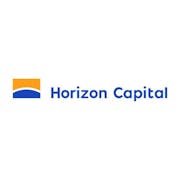
HQ: Ukraine
Most recent fund: $258.3M
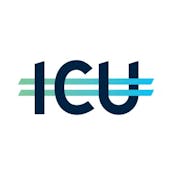
HQ: Ukraine
Most recent fund: NA

HQ: Ukraine
Most recent fund: $15M
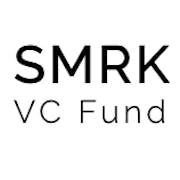
HQ: Ukraine
Most recent fund: NA
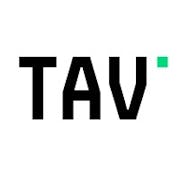
HQ: Germany & Ukraine
Most recent fund: $50M
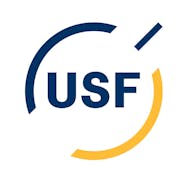
HQ: Ukraine
Most recent fund: $18M

HQ: Ukraine
Most recent fund: $25M
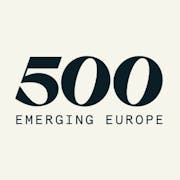
HQ: Turkey
Most recent fund: $70M

HQ: US
Most recent fund: $9B

HQ: UK
Most recent fund: NA

HQ: Czech Republic
Most recent fund: $80M

HQ: US
Most recent fund: $30M

HQ: US
Most recent fund: $4.6B

HQ: UK
Most recent fund: $215M
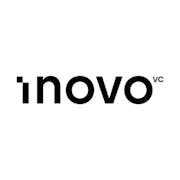
HQ: Poland
Fund size: $102M

HQ: US
Most recent fund: $25M

HQ: Czech Republic
Most recent fund: $32M
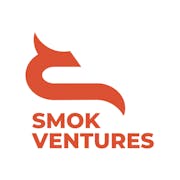
HQ: Poland
Most recent fund: $12M

HQ: Switzerland
Most recent fund: NA

HQ: Estonia
Most recent fund: $8.7M
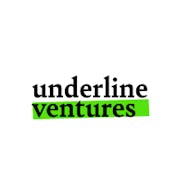
HQ: Romania
Most recent fund: $21M

HQ: Greece
Most recent fund: $96M

Even amidst an atrocious war and a global tech market meltdown, Ukrainian IT has grown at a double-digit rate this year. This is a testament to the extraordinary engineering and entrepreneurial talent in the country, as well as the courage, resourcefulness, and grit of this nation, on the battlefield and beyond. Local tech entrepreneurs are not spoiled by large sums of investors’ cash, so they have learned to build frugal, profitable businesses, with a strong tendency towards sound technology and robust unit economics. In many ways, the parallel with the Israeli tech scene is a relevant one. But then, Ukraine is a country five times the size.
Much has changed since February 2022, but Ukrainians and the Ukrainian tech ecosystem have demonstrated incredible resilience - and even growth - in the face of war.
Despite the conditions caused by Russia’s invasion and its brutal war, the Ukrainian Internet and Communication Technology (ICT) sector showed significant growth in February 2022. The single month export figure amounted to $839M, 31% higher than in January 2022, 45% higher than the monthly average for 2021, and 75% higher compared to February 2021.
For the first eight months of 2022, ICT exports actually grew by 16% year over year, according to the monitoring service Opendatabot.
Additionally, as another slice on the data, per the National Bank of Ukraine, during the first nine months of 2022, the volume of Ukrainian computer services increased by 13% (to almost $5.5B). The overall taxes / fees paid by the ICT industry during this time totalled $1.3B. Nine months into this year, the Ukrainian national ICT industry has maintained positive growth and remains the only export industry that stably generates foreign currency income for the Ukrainian economy under current war conditions. Ukrainian companies keep working continuously, implementing projects, paying taxes, attracting investments and new customers, and actively entering the global market.

In the new war-time realities, they managed to quickly adapt and continue their development. More than 80% of ICT companies retained almost 100% of their contracts. Today, the Ukrainian ICT sector fulfils two important tasks for the Ukrainian economy: it provides regular foreign currency income and pays taxes. Companies donate tens of millions of dollars and continue to grow. Meanwhile, we create opportunities for development in all possible ways. One of the goals of the Ministry of Digital Transformation is to double the share of ICT in the GDP of our country in a few years and to make Ukraine the biggest ICT hub in Eastern Europe. Ukraine is about to become the best testing ground not only for the newest defence technologies, but basically for any technology that can help us win and recover: energy, telecom, public services, AI, and robots.
According to the latest mapping of the Ukrainian tech ecosystem by Dealroom, Ukraine is home to more than 1500 startups, while there are a further 600 Ukrainian-founded tech companies that are based outside of the country. Dealroom estimates that the combined enterprise value of Ukrainian tech companies totals almost $23B and, while this has declined in 2022 in line with the global technology market changes, their overall value has grown by more than 8x since 2017. For a local database, check out the ecosystem overview put together by Ukraine's Ministry of Digital Transformation.
As has been common thread for many startups and scaleups born in Central and Eastern Europe, a significant number of companies founded in Ukraine or started by Ukraine-based founding teams have either been established or since moved abroad. In fact, around $22B of the $23B in enterprise value created by Ukraine-founded companies is accounted for by companies that have relocated outside of Ukraine. Nevertheless, these companies typically retain strong ties to Ukraine, often with large teams still present in the country. This ensures that they continue to play an important role in continuing the development of the local ecosystem.
Despite the war, a total of $241M has been raised by startups born in Ukraine in 2022, dating to the end of October. To put that within the context of the wider Central and Eastern European region, this places Ukraine in sixth place overall, just behind Romania. This is a remarkable achievement given the ongoing situation.
of ICT companies had restored business to the indicators of 24 February 2022, and are continuing to grow, according to the July IT Research Resilience study by the Lviv IT-cluster.
of the country's ICT companies have attracted new customers since the war began according to IT Ukraine Association data.
Both within and outside Ukraine, companies associated with Ukrainians continue to raise and close significant deals, even amidst global headwinds in private markets. One Ukrainian-founded company even became a unicorn this year following its latest round: Unstoppable Domains ($1B valuation), which builds uncensorable websites via domains secured by blockchains.
| Company | Round Size | Date | Company HQ |
|---|---|---|---|
| Unstoppable Domains | $65M | Jul 22 | US |
| AirSlate | $52M | Jun 22 | US |
| Preply | $50M | Jul 22 | US |
| Spin Technology | $16M | Aug 22 | US |
| ATLANT 3D | $15M | Sep 22 | Denmark |
| Rentberry | $12M | Jul 22 | United States |
| Biobetter | $10M | Sep 22 | US |
| Fintech Farm | $7M | Jan 22 | Ukraine |
| Salto X | $5M | Jul 22 | Latvia, Estonia, Ukraine |
| Everlend | $3M | Aug 22 | Ukraine |
Additionally, established Ukrainian unicorns have taken substantial steps to aid Ukraine after Russia's invasion in 2022.
- Grammarly donated $5M, the entirety of the net revenue it has made in Russia and Belarus since the 2014 invasion of Crimea, and suspended service to both countries. Grammarly provides its services for free to all non-profits and NGOs doing essential work, and at least 215 Ukrainian groups were using its service as of April 2022. If users write about Ukraine in the app, they are directed to a landing page with links and organisations "for people to educate themselves on the facts of the war and how they can #StandWithUkraine".
- People.ai undertook a campaign to get nearly all of its 42-person Ukrainian workforce out of the country by mid-February, before the invasion even began. Its Ukrainian founder and CEO, Oleg Rogynskyy, coordinates donations to relief efforts from the Silicon Valley tech community.
- Gitlab has set up a donation match scheme via its co-founders' foundation, supporting non-profits helping people affected by the war.
- Revolut eased the process for Ukrainian refugees to open accounts, waived transfer fees for money sent to Ukrainian bank accounts, set up in-app donations for all Revolut customers to the Red Cross's work in Ukraine, and donated $1.8m themselves (as of August 2022).

Ukraine in 2022 is in the spotlight of global attention. The war is a gross cause, but the main point is what we did with this challenge. Ukrainians have surprised the world with their level of bravery, opposing Russia, who attacked us and tried to take our freedom, our country, and our future. We have clearly stated our will to stick to the humanistic and democratic principles of Western civilisation and were fortunate to get multilevel support from all countries, understanding the importance of global cooperation and values, that lay in the basis of our common civilisation. This is not a one-way street. Ukraine has a lot to offer to the world as a country located in the heart of Europe, full of resources and talented, creative people with free spirit. Such human capital is a very precious asset for tech, and over the last few years it has become one of the most promising industries in Ukraine’s economy, having 240K+ tech professionals, 23K+ qualified tech graduates, 500+ service IT companies, 1700+ startups and scaleups, 6 unicorns, you name it. We look to the future with a lot of hope and determination, open for cooperation and successful global partnerships.
At over 2M total ICT (Internet and Communication Technology) specialists, the CEE region was home to almost 25% of ICT specialists in mainland Europe as of December 2021 according to Eurostat. That said, Eurostat's definition of ICT specialists is narrower than our definition of the tech talent landscape as it includes only workers working with ICT systems (e.g. computing professionals, software developers, telecommunication engineers, etc.), and therefore wouldn't necessarily encompass less technical roles (e.g. Sales, Product, HR, etc), so some would argue this number should be greater. Since the beginning of the war, much has changed for many of these employees.
Per The Voice of Ukrainian Start-Ups report, in December 2021 Ukraine represented 14% of CEE's total ICT workers, at 285K workers. As of May, this number was down to 228K as many workers were forced to relocate abroad due to the war, a 20% decrease. Most Ukrainian refugees remained in the CEE region, and many have since returned, so it is difficult to know how much this may have affected these totals. Regardless, with so much of Europe's tech talent in the CEE region, the war has had an outsized impact on this community.
ICT specialists joined the armed forces since the start of the war.
of startups have chosen to relocate their team since the beginning of the war but of the 56% who didn't, they are firmly set to stay in Ukraine, according to a survey by TechUkraine.
of ICT specialists noted that since the beginning of the full-scale invasion, their income has increased or remained at the level of February 2022, according to a survey from Lviv IT Cluster.
Beyond the contribution of the tech industry to the Ukrainian economy, tech has also played a critical part in Ukraine’s defence of its territory and population. One example is the role of technology in cyber defence. During the first month of the war, for example, Ukraine suffered a threefold increase in the number of cyberattacks versus 2021. The bulk of these attacks were concentrated in February and March, but more than 1100 cyberattacks on Ukrainian tech infrastructure have been recorded as of August 2022. These have primarily been directed at government and security and defence-related targets, but have hit commercial organisations and financial institutions too. Other sector targeted include the energy, telecommunication and transport sector.
Consider setting up offices in Ukraine / with Ukrainian partners, taking advantage of the grit and perseverance of Ukraine's significant skilled workforce and to share knowledge and gained experience with Ukrainian employees.
Join the Digital4Freedom initiative, part of the UNITED24 global platform, to support the rebuilding process of Ukraine through innovation and digitisation.
Join Diia.City, a unique tax and legal space aimed at creating favourable conditions for companies operating in the tech sector.

The Ukrainian Ministry of Digital Transformation has put together a Ukrainian tech ecosystem dashboard with ongoing information on companies, investors, accelerators, tech communities, and more.